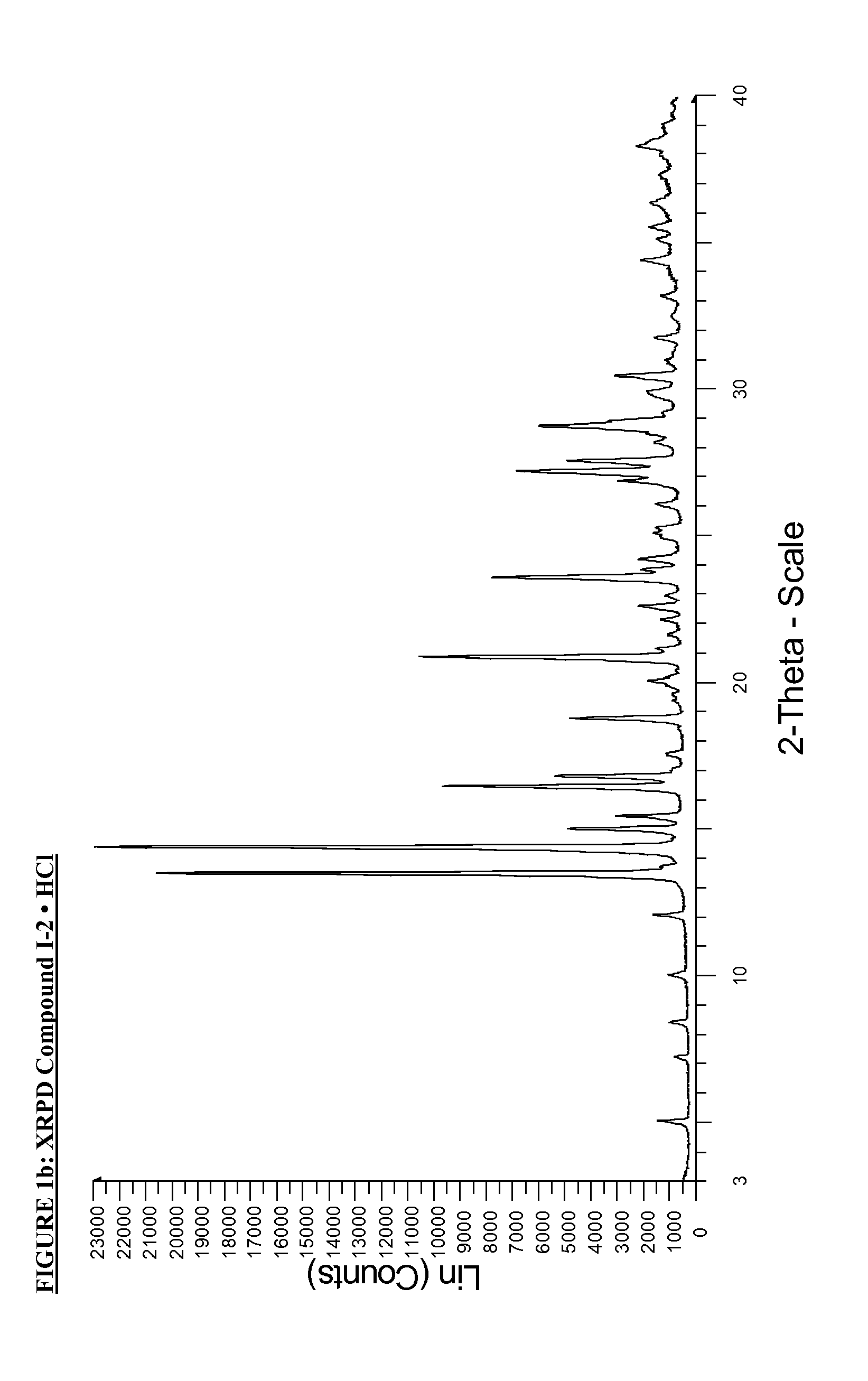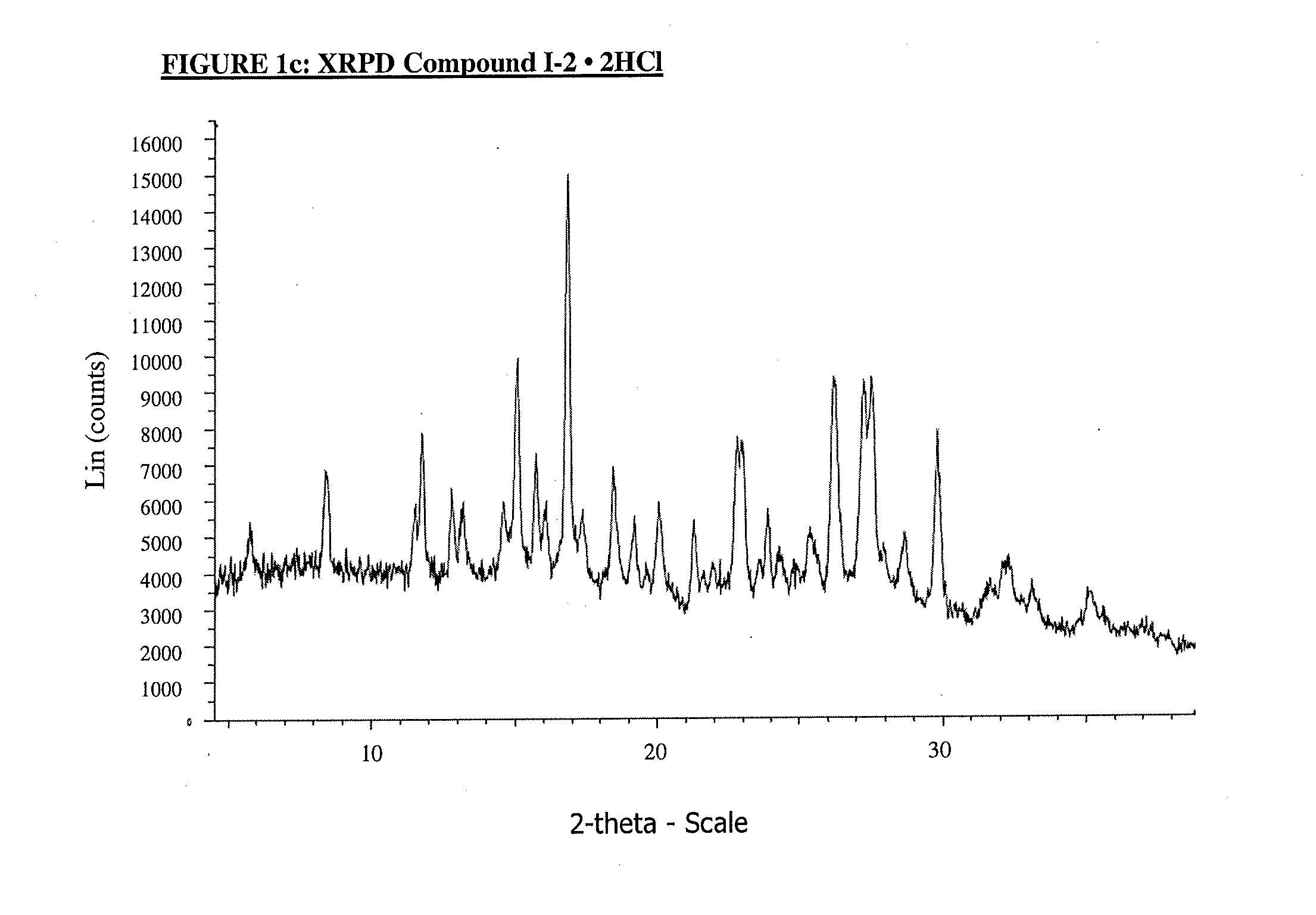Processes for Making Compounds Useful as Inhibitors of ATR Kinase
a technology of atr kinase and process, which is applied in the preparation of carbamic acid derivatives, organic chemistry, drug compositions, etc., can solve problems such as dna damage, and achieve the effects of improving yield, easy scaling up to larger quantities, and long shelf li
- Summary
- Abstract
- Description
- Claims
- Application Information
AI Technical Summary
Benefits of technology
Problems solved by technology
Method used
Image
Examples
example 1
Synthesis of 2-(4-(5-amino-6-(3-(4-((tetrahydro-2H-pyran-4-ylamino)methyl)phenyl)isoxazol-5-yl)pyrazin-2-yl)pyridin-2-yl)-2-methylpropanenitrile
[0237]
Method 1:
[0238]To a solution of tetrahydropyran-4-amine (100 g, 988.7 mmol) in MeOH (3.922 L) was added 4-(diethoxymethyl)benzaldehyde (196.1 g, 941.6 mmol) over 2 min at RT. The reaction mixture was stirred at RT for 80 min, until the aldimine formation was complete (as seen by NMR). NaBH4 (44.49 g, 1.176 mol) was carefully added over 45 min, maintaining the temperature between 24° C. and 27° C. by mean of an ice bath. After 75 min at RT, the reaction has gone to completion. The reaction mixture was quenched with 1M NaOH (1 L). The reaction mixture was partitioned between brine (2.5 L) and TBDME (4 L then 2×1 L). The organic phase was washed with brine (500 mL) and concentrated in vacuo. The crude mixture was redissolved in DCM (2 L). The aqueous phase was separated, the organic phase was dried over MgSO4, filtered and concentrated in...
example 2
Synthesis of 3-[3-[4-[dideuterio(methylamino)methyl]phenyl]isoxazol-5-yl]-5-(4-isopropylsulfonylphenyl)pyrazin-2-amine (Compound II-1)
[0252]
Step 1: 5-Bromo-3-((trimethylsilyl)ethynyl)pyrazin-2-amine
[0253]
[0254](Trimethylsilyl)acetylene (1.845 g, 2.655 mL, 18.78 mmol) was added dropwise to a solution of 3,5-dibromopyrazin-2-amine (compound i) (5 g, 19.77 mmol) in DMF (25 mL). Triethylamine (10.00 g, 13.77 mL, 98.85 mmol), copper(I) iodide (451.7 mg, 2.372 mmol) and Pd(PPh3)4 (1.142 g, 0.9885 mmol) were then added and the resulting solution stirred at RT for 30 minutes. The reaction mixture was diluted with EtOAc and water and the layers separated. The aqueous layer was extracted further with EtOAc and the combined organic layers washed with water, dried (MgSO4) and concentrated in vacuo. The residue was purified by column chromatography eluting with 15% EtOAc / Petroleum ether to give the product as a yellow solid (3.99 g, 75% Yield). 1H NMR (400.0 MHz, DMSO) δ 0.30 (9H, s), 8.06 (IH, ...
example 3
Synthesis of 3-[3-[4-[dideuterio-(trideuteriomethylamino)methyl]phenyl]isoxazol-5-yl]-5-(4-isopropylsulfonylphenyl)pyrazin-2-amine (Compound II-2)
[0275]
Step 1: tert-Butyl N-[dideuterio-[4-(dimethoxymethyl)phenyl]methyl]-I-(trideuteriomethyl)carbamate
[0276]
[0277]LiHMDS (1M in THF) (1.181 mL of 1 M, 1.181 mmol) was added dropwise to a stirred solution of tert-butyl N-[dideuterio-[4-(dimethoxymethyl)phenyl]methyl]carbamate (300 mg, 1.059 mmol) in THF (5 mL) at −78° C. The solution was stirred at this temperature for 30 minutes then trideuterio(iodo)methane (198.0 mg, 84.98 L, 1.366 mmol) was added dropwise and the mixture allowed to warm to ambient temperature over 21 hours. The reaction was again cooled to −78° C. and a further portion of LiHMDS (1M in THF) (635.4 μL of 1 M, 0.6354 mmol) was added. After 15 minutes more trideuterio(iodo)methane (76.75 mg, 32.94 μL, 0.5295 mmol) was added and the reaction allowed to warm to ambient temperature over 5 hours. The mixture was diluted with...
PUM
 Login to View More
Login to View More Abstract
Description
Claims
Application Information
 Login to View More
Login to View More - R&D
- Intellectual Property
- Life Sciences
- Materials
- Tech Scout
- Unparalleled Data Quality
- Higher Quality Content
- 60% Fewer Hallucinations
Browse by: Latest US Patents, China's latest patents, Technical Efficacy Thesaurus, Application Domain, Technology Topic, Popular Technical Reports.
© 2025 PatSnap. All rights reserved.Legal|Privacy policy|Modern Slavery Act Transparency Statement|Sitemap|About US| Contact US: help@patsnap.com



